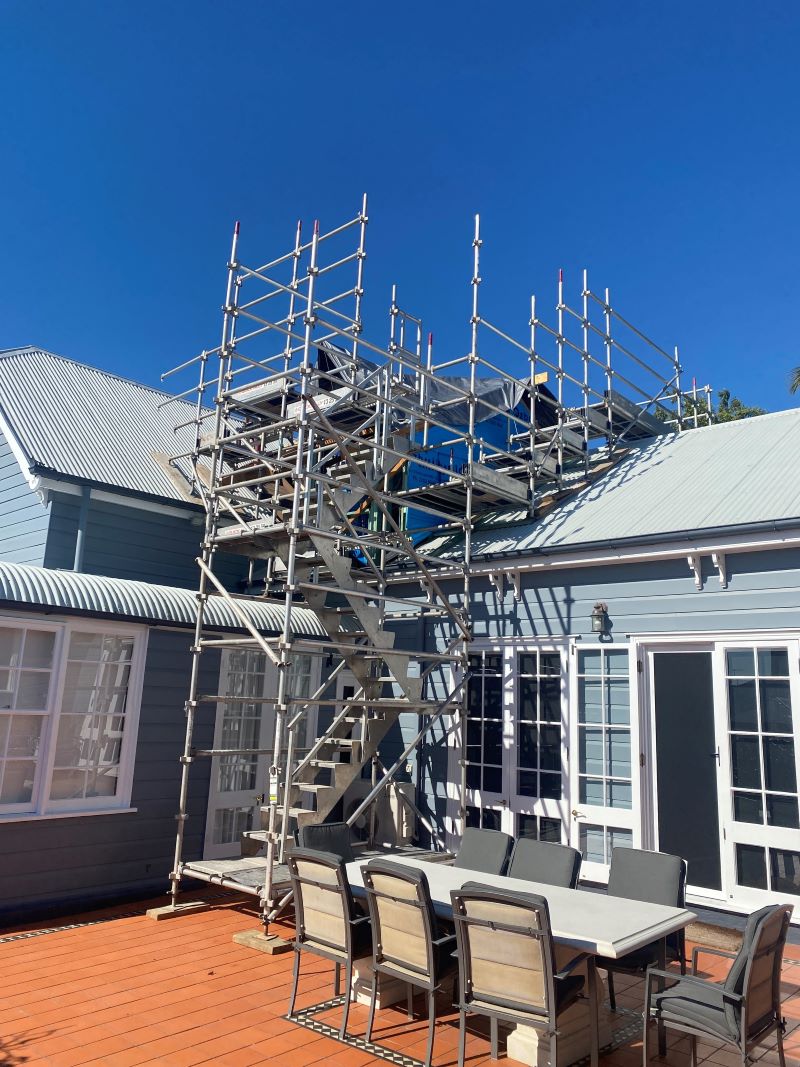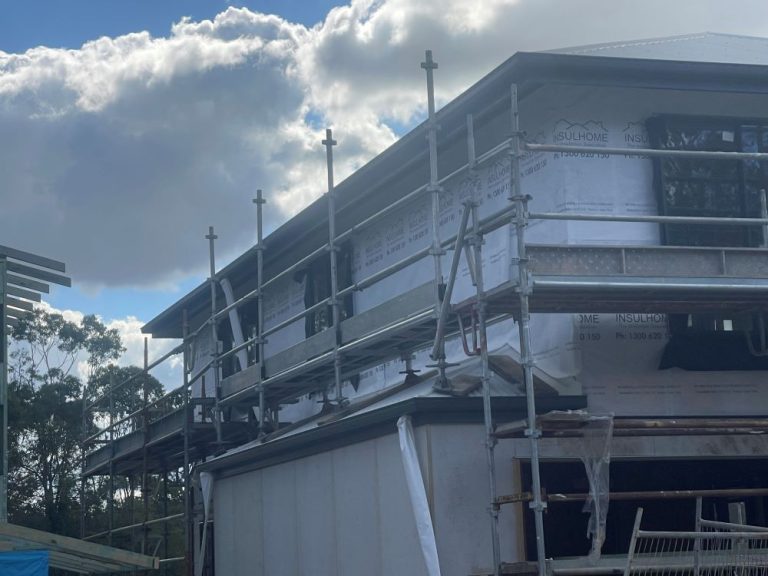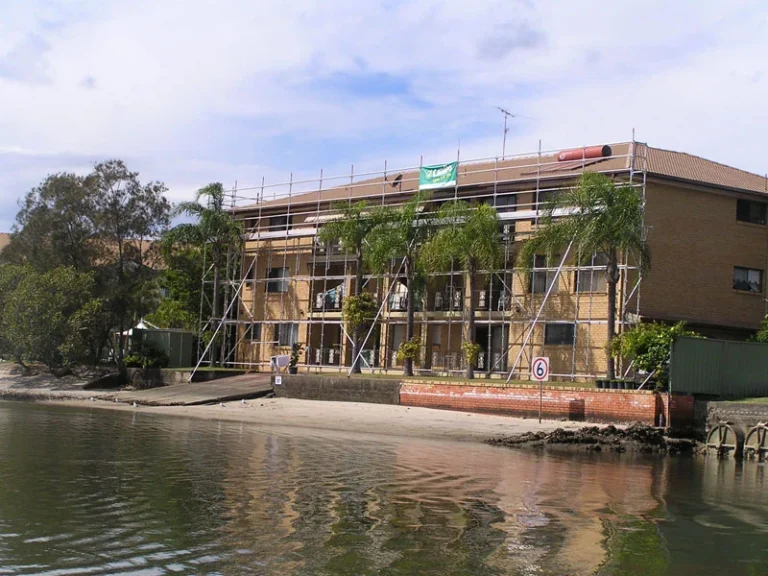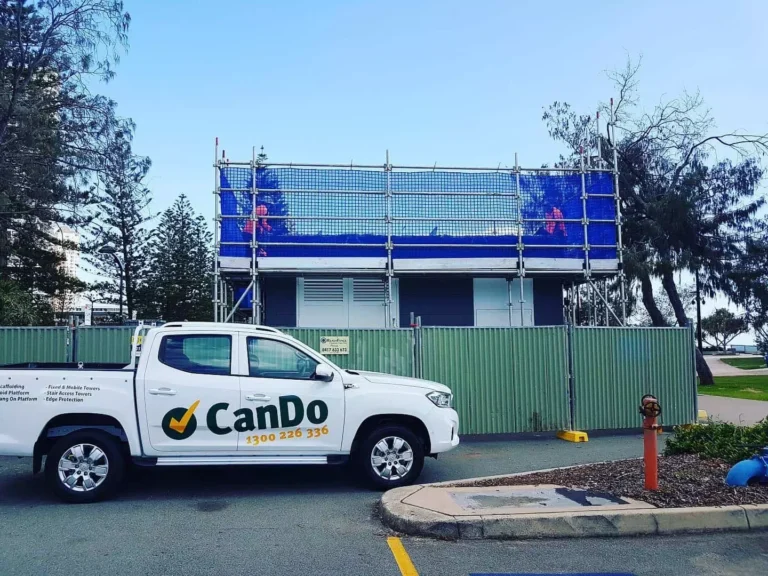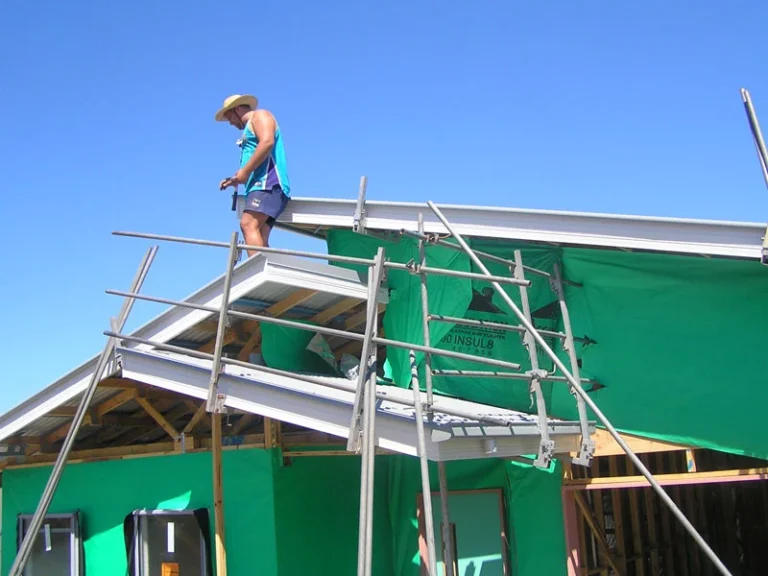Understanding Residential Scaffolding
The Importance of Scaffolding in Home Construction
Scaffolding is a fundamental component of the construction process when it comes to working at heights. It ensures the safety of workers by providing a stable and secure platform for them to perform their tasks. Some key reasons why scaffolding is important in new home construction include:
- Safe working environment: Scaffolding allows workers to access different levels of a building safely. It provides a stable platform to move around, reducing the risk of accidents and falls.
- Efficient workflow: With scaffolding in place, workers can easily access all areas of the building, including ceilings, walls, and roofs. This facilitates a smoother workflow, making construction tasks more efficient and timelier.
- Access to tools and materials: Scaffolding provides a convenient space to store tools and materials, eliminating the need for workers to constantly go up and down ladders. This saves time and enhances productivity on the construction site.
- Flexibility and adjustability: Scaffolding systems can be customized and adjusted to suit the specific requirements of each construction project. This adaptability allows for maximum safety and efficiency.
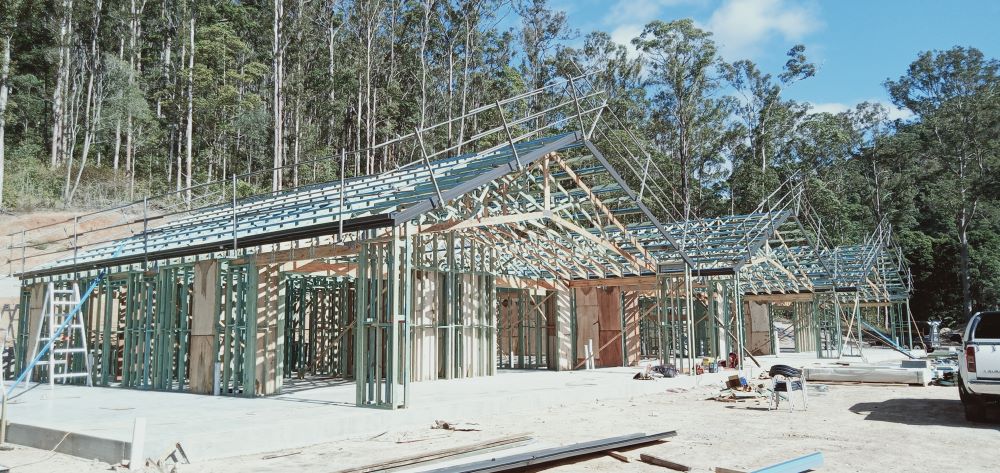
Regulations and Standards for Scaffolding in Australia
In Australia, the use of scaffolding in residential construction is subject to specific regulations and standards. These regulations ensure the safety of workers and compliance with industry best practices. Key regulations and standards for scaffolding in Australia include:
- Work Health and Safety (WHS) Regulations: These regulations provide guidelines on the safe use of scaffolding in construction. They outline the responsibilities of employers, workers, and others involved in the construction process.
- Australian Standards: Australian Standards, such as AS/NZS 1576.1:2010, outline the requirements for the design, construction, and use of scaffolding systems. These standards cover aspects such as load capacity, stability, and access requirements.
- State and Territory Legislation: Each state and territory in Australia may have additional regulations and requirements specific to their jurisdiction. It is essential to be familiar with the local legislation governing scaffolding in residential construction.
To ensure compliance with these regulations and standards, it is advisable to engage professional scaffolding companies that are knowledgeable about the specific requirements for residential projects. Reliable scaffolding suppliers in Australia can assist in selecting the appropriate scaffolding system for your construction needs.
Understanding the importance of scaffolding in home construction and adhering to the relevant regulations and standards are vital for ensuring a safe and successful construction project.
Types of Residential Scaffolding
Residential construction projects in Australia often require the use of scaffolding to ensure the safety of workers and facilitate the construction process. There are several types of scaffolding commonly used in residential settings. Let’s explore two of them: stage scaffolding, and mobile scaffolding.
Stage Scaffolding
Stage scaffolding, also referred to as “ground up scaffolding,” is a popular choice for residential construction projects due to its ease of assembly and versatility. This type of scaffolding uses pre-designed components that fit together, creating a stable and secure structure.
The stage scaffolding components, such as frames and cross braces, are designed to interlock, providing strength and stability. This makes stage scaffolding quick to erect and dismantle, saving time and effort during the construction process. Additionally, the modular design allows for easy adjustments and modifications as the project progresses.
Mobile Scaffolding
Mobile scaffolding, also known as “rolling scaffolding” or “tower scaffolding,” offers mobility and convenience for residential construction projects. It is designed with wheels or casters, allowing it to be easily moved and repositioned as needed.
Mobile scaffolding is ideal for tasks that require frequent repositioning, such as painting, plastering, or accessing different areas of a building. The wheels or casters are typically lockable, providing stability and preventing accidental movement during use. However, it’s important to ensure that the mobile scaffolding is on a stable and level surface before working on it.
By understanding the different types of residential scaffolding available, builders and homeowners can choose the most suitable option for their specific project needs. Whether it’s the adaptability of traditional tube and coupler scaffolding, the convenience of system scaffolding, or the mobility of mobile scaffolding, selecting the right type of scaffolding is crucial for a safe and efficient construction process.

Components of Residential Scaffolding
Residential scaffolding is built using various components that work together to provide a safe and stable structure. Understanding the different parts of the scaffolding system is essential for its proper installation and use. In this section, we will discuss three key components of residential scaffolding: standards and ledgers, transoms and braces, and platforms and decks.
Standards and Ledgers
Standards are vertical tubes that form the main support of the scaffolding system. They are typically placed at regular intervals and serve as the backbone of the structure. Standards provide stability and support the weight of the scaffolding, ensuring a safe working environment.
Ledgers, on the other hand, are horizontal tubes that connect the standards together. They are placed horizontally, parallel to the building or structure being worked on. Ledgers provide additional support and help distribute the weight evenly across the scaffold.
The sizes of standards and ledgers can vary depending on the specific requirements of the project. It’s important to consult the scaffolding regulations in Australia to ensure compliance with the standards set for residential construction. For more information on the regulations, refer to our article on scaffolding regulations in Australia.
Transoms and Braces
Transoms are horizontal tubes that connect the standards at right angles. They provide additional support to the scaffolding system and help to strengthen the overall structure. Transoms are typically placed between ledgers and provide a platform for workers to stand on while working at various heights.
Braces are diagonal tubes that add stability to the scaffolding. They are installed diagonally across the standards and provide reinforcement against lateral movement and swaying. Braces play a crucial role in maintaining the integrity and safety of the scaffolding system.
Both transoms and braces are important components that contribute to the overall stability and strength of the residential scaffolding structure. Proper installation and alignment of these components are crucial to prevent accidents and ensure a secure working platform.
Platforms and Decks
Platforms or decks are the working surfaces of the scaffolding system. They provide a stable and secure area for workers to stand on while carrying out construction or maintenance tasks. Platforms are typically made of wooden planks or metal grating and are placed between the ledgers and transoms.
The dimensions of the platforms can vary based on the specific requirements of the project. It’s important to ensure that the platforms are wide enough to accommodate workers and their equipment comfortably. Regular inspections and maintenance of the platforms are essential to ensure their structural integrity.
By understanding the various components of residential scaffolding, builders and homeowners can ensure the proper installation and use of scaffolding during construction.
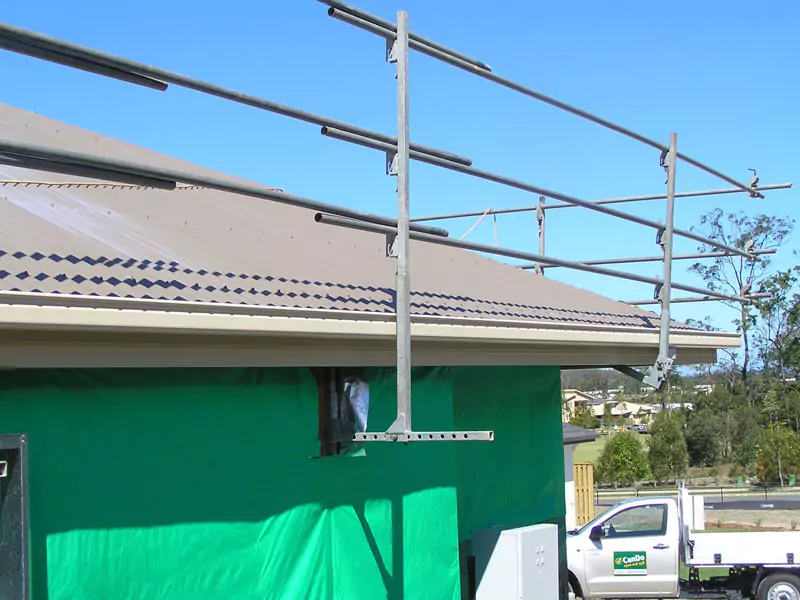
Erecting and Dismantling Residential Scaffolding
Erecting and dismantling residential scaffolding is a crucial process in home construction. It requires careful planning, precise execution, and adherence to safety measures. In this section, we will discuss the key steps involved in erecting and dismantling residential scaffolding, along with important safety considerations.
Preparing the Site
Before erecting the scaffolding, it is essential to prepare the site to ensure a safe and stable foundation. This involves clearing the area of any debris or obstacles that could interfere with the scaffolding structure. The ground should be levelled and compacted to provide a stable base. It is also important to consider the distance between the scaffolding and the building to allow for easy access and movement.
Assembling the Scaffolding
The process of assembling the scaffolding involves carefully piecing together its various components. Start by laying the base plates or adjustable jacks on the ground, followed by the standards and ledgers. Connect the standards and ledgers using couplers or connectors to create the scaffolding frame. Add transoms and braces at appropriate intervals to increase stability. Platforms and decks should be securely installed at the desired heights to provide safe working surfaces.
It is crucial to follow the manufacturer’s instructions and guidelines when assembling the scaffolding. Ensure that all components are properly secured and tightened to prevent any instability during use. Regular inspections should be conducted to identify and address any issues with the scaffolding structure.
Safety Measures and Best Practices
Safety should be a top priority when erecting and using residential scaffolding. Here are some important safety measures and best practices to keep in mind:
- Fall Protection Systems: Install guardrails and toe boards along the working platforms to prevent falls. Ensure that the scaffolding has sufficient height to comply with safety regulations. Workers should also wear appropriate personal protective equipment (PPE), including hard hats and safety harnesses.
- Stability and Load Capacity: Check the stability of the scaffolding by ensuring that it is properly levelled and secured. The scaffolding should be able to withstand the anticipated load, including the weight of workers, tools, and materials. Refer to the manufacturer’s specifications for the maximum load capacity of the scaffolding.
- Proper Access and Egress: Provide safe and convenient access to the scaffolding using ladders or stairs. Ensure that the access points are well-maintained and free from any obstructions. Workers should be trained on proper climbing techniques and should never climb the scaffolding from the outside.
- Regular Inspections: Regularly inspect the scaffolding for any signs of damage, wear, or instability. Inspections should be conducted before each use and at regular intervals during the construction process. Any identified issues should be promptly addressed and repaired by a qualified professional.
By following these safety measures and best practices, you can ensure the safe and effective use of residential scaffolding during home construction. Remember to consult the relevant regulations and standards for scaffolding in Australia
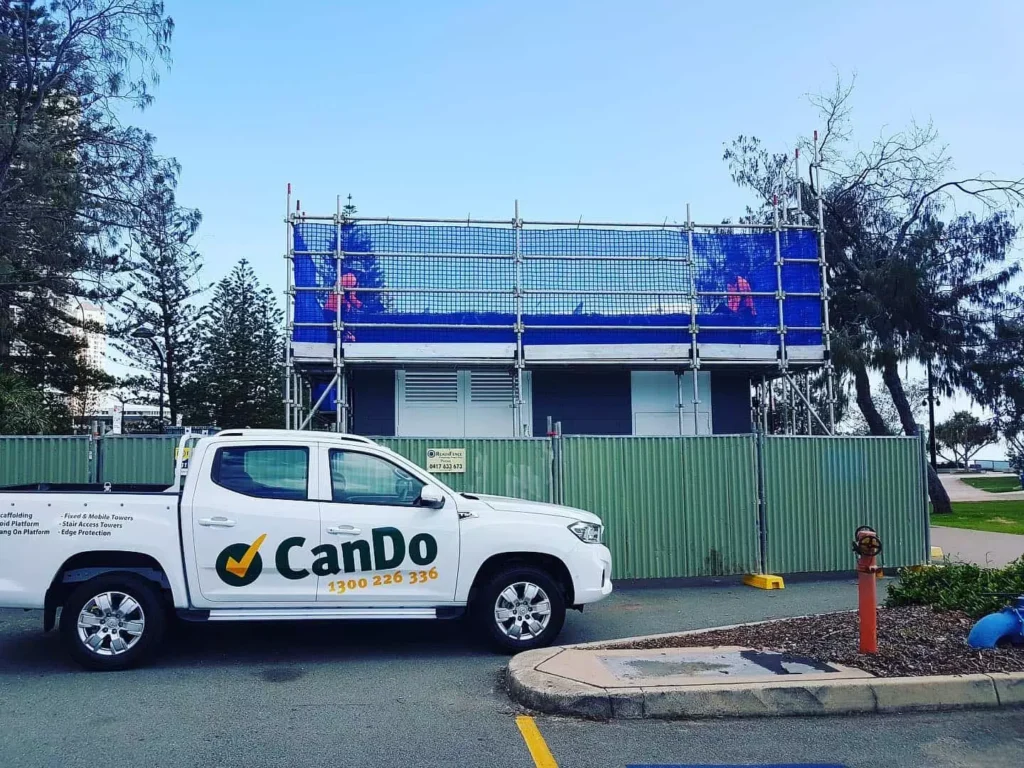
Safety Considerations for Residential Scaffolding
When it comes to residential scaffolding, safety should always be the top priority. Working at heights and ensuring the stability and load capacity of the scaffolding are crucial aspects that require careful attention. Additionally, fall protection systems play a vital role in maintaining a secure working environment. Let’s explore these safety considerations in more detail.
Working at Heights
Working at heights poses inherent risks, and it is essential to take appropriate precautions when using residential scaffolding. Workers should be trained in working safely at heights and should always wear the necessary personal protective equipment (PPE), such as hard hats and safety harnesses. It is crucial to follow proper procedures for ascending and descending the scaffolding and to avoid unnecessary movement or leaning over the guardrails. B
Fall Protection Systems
Fall protection systems are essential for ensuring the safety of workers on residential scaffolding. Guardrails should be installed on all open sides and ends of the scaffolding to prevent falls. These guardrails should be at least 950mm high and feature a mid-rail and toe-board to provide additional protection. Additionally, workers should be provided with suitable and properly fitted safety harnesses, which should be securely attached to an anchor point. Regular inspections of the fall protection systems should be conducted to ensure their effectiveness and to identify any potential hazards.
Stability and Load Capacity
Ensuring the stability and load capacity of residential scaffolding is critical for the safety of workers and the structural integrity of the scaffolding itself. Scaffolding should be erected on a stable and level surface, and appropriate measures should be taken to prevent movement or displacement, especially in high winds or adverse weather conditions. The scaffold structure should be designed and constructed to withstand the anticipated loads, including the weight of workers, equipment, and materials. Regular inspections should be carried out to identify any signs of damage or deterioration that may compromise the stability or load capacity of the scaffolding.
By prioritizing safety and following the necessary precautions, the risks associated with residential scaffolding can be minimized. It is essential to stay up-to-date with the scaffolding regulations in Australia and to work with reputable scaffolding suppliers in Queensland. They can provide guidance and support in ensuring that the scaffolding used meets the necessary safety standards. For more information on scaffolding in Australia, including commercial scaffolding and mobile scaffolding.
Hiring or Buying Residential Scaffolding
When it comes to residential construction projects, one important decision to make is whether to hire or buy the scaffolding needed for the job. Both options have their own advantages and considerations. Let’s explore the pros and cons of renting and purchasing residential scaffolding, along with factors to consider and finding reliable scaffolding suppliers in Australia.
Renting vs. Buying Scaffolding
Renting scaffolding can be a practical choice for smaller projects or one-time use. It allows you to save on upfront costs and eliminates the need for long-term storage. Renting scaffolding also provides the flexibility to choose different types and sizes of scaffolding based on the specific requirements of each project. Additionally, reputable scaffolding rental companies often ensure that their equipment is well-maintained and up to industry standards.
On the other hand, buying scaffolding can be beneficial for larger and ongoing projects. It provides convenience and accessibility, as you have scaffolding readily available whenever needed. Owning scaffolding also offers cost savings in the long run, especially if you have multiple projects or anticipate the need for scaffolding in the future. However, it’s important to consider the initial investment, storage requirements, and responsibility for maintenance and safety compliance.
Factors to Consider
When deciding whether to rent or buy residential scaffolding, several factors should be taken into account:
- Project Duration: Assess the estimated duration of your project. Renting scaffolding may be more cost-effective for shorter-term projects, while buying may be more economical for longer-term projects.
- Budget: Consider your budget and financial capabilities. Evaluate the upfront costs of purchasing scaffolding and compare them to the rental fees. Additionally, factor in the potential return on investment if you plan to use the scaffolding for future projects.
- Storage Space: Determine if you have adequate storage space to keep the scaffolding when it’s not in use. Renting scaffolding eliminates the need for storage, while purchasing requires proper storage arrangements.
- Flexibility: Evaluate the flexibility required for your projects. Renting scaffolding offers the advantage of easily adjusting the type and size of scaffolding based on project needs. Buying scaffolding provides convenience and availability for immediate use.
Finding Reliable Scaffolding Suppliers
Whether you choose to rent or buy residential scaffolding, finding a reliable scaffolding supplier is essential. Look for scaffolding suppliers in your area with a good reputation and extensive experience in the industry. Consider factors such as their range of products, safety standards, customer reviews, and adherence to local regulations.
To find trustworthy scaffolding suppliers , seek recommendations from other professionals in the construction industry.
Partnering with reliable scaffolding suppliers ensures that you have access to safe and high-quality scaffolding equipment throughout your residential construction projects.
Get in touch with Cando Today

